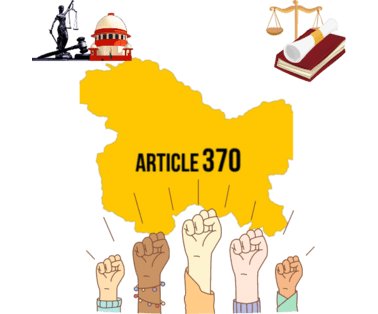The Kerala financial crisis has escalated as the state government rejected a ₹5,000 crore borrowing offer from the Union government. Kerala insists that it needs a minimum of ₹10,000 crore to manage its financial challenges effectively.
Key Highlights of Kerala Financial Crisis
- Senior advocate Kapil Sibal, representing the state, rejected the proposal and said the state would need a minimum of ₹10,000 crore.
- The union government said its offer came with strict conditions to prevent it from setting a precedent for other states to approach courts for similar packages.
- The offer was prompted by a suggestion from a bench comprising Justices Surya Kant and KV Viswanathan, hearing a lawsuit filed in the Supreme Court by the Kerala government.
- The court urged the union government to consider this a special case and provide Kerala with a one-time package by 31 March.
- Both sides admitted that negotiations failed after rounds of talks and asked the court to hear the case in detail before passing an interim order.
Centre’s Position on Kerala Financial Crisis
- Centre said “substantial financial resources” had been provided to the Kerala government from FY21 to FY24, over and above the amount recommended by the 15th Finance Commission.
- One of these was the payment of ₹14,505 crore as a “back-to-back loan to meet GST compensation shortfall”.
- It emphasised that public finance management had a bearing on India’s credit rating.
- The Centre says Kerala’s financial crisis is a result of “mismanagement and extravagance” of its administration
Kerala Government’s Argument
- In December, finance minister Nirmala Sitharaman clarified in a reply in Parliament that there was no proposal for FY24 to relax the rules on the capacity of state governments, including Kerala’s, to borrow funds.
- While the Pinarayi government argues violation of federalism in limiting its borrowing,
- The Pinarayi Vijayan government has moved the Supreme Court alleging that the Centre’s move violates fiscal federalism and will prevent it from fulfilling the commitments it made in annual budgets.
- The Centre, in response, has claimed it has not curtailed the borrowing limit
Understanding Fiscal Autonomy and Responsibility
- Article 293 of the Constitution grants fiscal autonomy to states and mandates them to borrow only from within the territory of India on guarantee from the Consolidated Fund of the State.
- For the states, the extent of borrowing is defined in the fiscal responsibility Acts of each state.
- All transactions between the Centre and the state governments are carried out under the Fiscal Responsibility and Budget Management Act, 2003
- The Kerala government, in its Supreme Court petition, contends that the Centre is infringing upon its fiscal autonomy by amending the Fiscal Responsibility and Budget Management Act (FRBM), 2003, to curtail its borrowing limit.
- The Centre last amended the Act in 2022 to “reduce the fiscal deficit to below 4.5% of GDP by 2025-26”.
- The state also contends that the Centre’s move, first in May this year and then again in August, has cut its borrowing limit from Rs 32,422 crore to Rs 15,390 crore, and Rs 26,000 crore is immediately required to avert the impending financial crisis.
15th Finance Commission And Borrowing Limits
- Historically, the FRBM Act 2003 required states to limit their fiscal deficit to 3% of the GSDP.
- However, the Covid pandemic and the ensuing lockdowns required both state and Central governments to stretch their borrowings in order to meet the gap between falling revenues and rising expenditures.
- Later, the Government of India stepped up the borrowing limits of states from 3 per cent to 5 per cent for the year
- For the remainder of the period, it laid down the following recommendations for the normal net borrowing limit of states: 2021-22 > 4% of GSDP, 2022-23 > 3.5% of GSDP, 2023-24 to 2025-26 > 3% of GSDP
Kerala Fiscal Health: A Troubling Record
- The 15th Finance Commission designated Kerala to be a “highly debt stressed” state. Data revealed that Kerala had largely failed to limit its fiscal deficit to 3% of GSDP for almost all of the past decade.
- This implies that the state government is borrowing not to invest in productive schemes but to meet its day to day expenses such as salaries and pensions.
- The commission noted that Kerala had the second highest levels of salaries (as a percentage of total revenue expenditure), and worse, the trend growth of salaries was the highest — suggesting that this burden was continuing to rise.
- Not surprisingly, the capital expenditure has suffered and is “very low compared to its class both as a percentage of total expenditure as well as GSDP”.
- Kerala’s fiscal situation has not improved in the wake of the Covid pandemic with the fiscal deficit continuing to stay outside the mandated limits
Factors Worsening Kerala Financial Crisis
- The State relies heavily on revenue from taxes including GST but fluctuations in economic activity and external factors impact tax collections.
- Kerala is prone to natural disasters such as flood, landslides etc., which can cause widespread damage to infrastructure and disrupt economic activities.
- COVID-19 pandemic has exacerbated Kerala’s financial challenges, the economic slowdown resulting from lockdowns and restrictions has affected revenue streams while increasing healthcare and social welfare spending have added to expenditure pressures.
Other States Facing Borrowing Restrictions
- Kerala isn’t the only state facing borrowing limitations. The Centre has also reduced borrowing limits for:
- Punjab: ₹39,000 crore → ₹21,000 crore
- Himachal Pradesh: ₹14,000 crore → ₹9,000 crore
- Telangana: Borrowing limit slashed by ₹15,000 crore
Conclusion
The Kerala financial crisis remains a contentious issue, with the state government demanding greater fiscal autonomy, while the Centre insists on responsible financial management. As legal and political debates continue, Kerala’s economic future hinges on finding a sustainable solution to its growing debt burden.
To Download Monthly Current Affairs PDF Click here
Click here to get a free demo
Discover all about CLAT Exam



